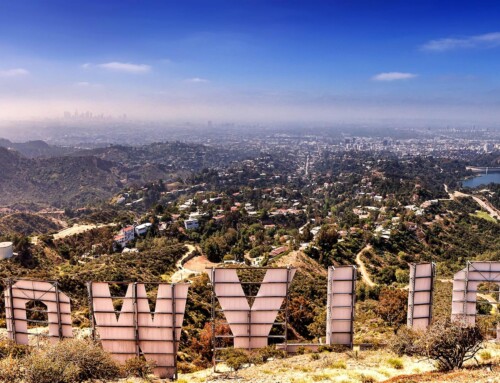Over the past two weeks, The Sandbox has sold virtual land valued more than $1.66 million on its metaverse map.
Considering that we are currently experiencing a crypto winter, that’s not a bad accomplishment. The business has just finished selling its LAND, which allows potential developers to buy virtual parcels of land in its metaverse where they may create games and other attractions.
These LAND plots are found next to branded experiences, indicating that customers may believe in the idea of beachfront virtual property or the idea that LAND is more valuable if it is close to something fun. Non-fungible Tokens (NFTs), which may specifically identify digital ownership, are used to transparently represent LAND in The Sandbox on public blockchains.
According to its business model, The Sandbox, developers can locate close to expensive developments, just like in the real world, by purchasing valuable real estate. The only people that spend actual money on The Sandbox’s currency, $SAND, are the developers (or gamers, in this case). After receiving NFTs proving their ownership, they proceed to develop it in the hope of increasing the land’s value.
This type of LAND transaction helped $SAND grow its market value to $641 million. Although that price is lower than it was during the cryptocurrency boom, some have said that it is still outrageous for a firm that, like its rival Decentraland, has few customers and has been labeled a “empty metaverse” due to its lack of users. There aren’t many transactions yet, according to DappRadar, which estimates that The Sandbox has 530 daily active wallets.
However, The Sandbox is still successful in selling LAND. The Sandbox began selling 1,900 virtual parcels on November 22 and has now finished selling two sections of the virtual lands. In order to safeguard user investments, The Sandbox artificially limited the quantity of LAND plots it would sell and sold the parcels for a set price. It has also finished and sold out two more collections of LAND.
The Sandbox has grown thanks to LAND sales of this kind. It has more than 400 employees and is owned by Animoca Brands. It plans to add another 50 to 60 people. This is taking place in a climate where FTX has filed for bankruptcy and its founder Sam Bankman-Fried is the target of criminal investigations that, in the opinion of some, implicate the whole crypto business.
According to CEO Arthur Madrid in an interview with GamesBeat, “We are still very excited about being able to feel like the metaverse and making The Sandbox into a Web3 platform,” “I think people trust The Sandbox as a safe place to create and get into NFTs.”
In addition to managing The Sandbox for ten years, Madrid and COO Sebastien Borget have been dating for fifteen years.
“The Sandbox has an approach where we make the metaverse more concrete and more tangible than anywhere in the world. We link it to LAND sales and have this concept of a map,” Borget explained in an interview with GamesBeat. “You can feel the excitement in Turkey, Dubai, South Korea, Hong Kong and more about participating in the metaverse together.”
He added, “Virtual LAND is the simplest way to understand Web3. We are building a neighborhood and a community of brands and users.”
Although The Sandbox’s virtual environment is still in its alpha testing phase, the firm has already made millions from the sale of virtual land, with names like Snoop Dogg and FaZe Clan holding land. Like Playboy and The Walking Dead, companies like Paris Hilton have a storyline.
The Council of Fashion Designers of America just debuted an exhibition in The Sandbox to honor 60 years of American fashion. The exhibit, titled Fashioning the Shades of American Design, was put together by Darnell-Jamal Lisby, a fashion historian and assistant curator of design at the Cleveland Museum of Art. Designs by Anna Sui, Zac Posen, Norma Kamali, Off-White, and Willi Smith are on display.
Such companies are establishing themselves as the key draws in The Sandbox. They hope to persuade consumers to own LAND close to these brands on the premise that virtual real estate is worthwhile. Owners of virtual LAND are free to construct on it, use it, rent it out, or sell it.
Is it profitable?
The LAND market was recently examined by Blockchain Research Lab. It looked at whether prominent LAND properties increased the value of nearby virtual geographic parcels. It assessed the value of the Bored Ape Yacht Club location in The Sandbox by looking at its position.
The study, which concentrated on all LAND sales made before November 9, revealed that the cost of LAND has stabilized. After Facebook changed its name to Meta in October 2021, the hype surrounding the metaverse peaked, and land prices soared.
It peaked in January 2022 at about $12,000 per piece of land, but dropped with the cryptocurrency meltdown to about $2,000 to $2,200 in November. However, that price is now greater than it was at the beginning of the market surge, which is an indication that investors are aware that LAND is an asset class or an investment that could someday be profitable. The speed of trading is still reasonable.
Nearly 10,000 digital LAND pieces were sold again in 2022, with resellers earning an average return of 109%. The typical return on resales was 15%, and less than half of them resulted in losses. The study revealed that those who hold LAND for a long time have reaped rewards.
Only 2% of landowners have more than 51 parcels of land, compared to approximately 64% who possess just one. The typical wallet today has roughly eight parcels of property, and the number of active wallets has been rising over time. The distribution of land has improved throughout time. Furthermore, the Blockchain Research Lab noted that while there is no physical distance in the metaverse, location does appear to be important.
The cost of parcels is influenced by the location of LAND. Warner Music Group’s entry in January 2021 resulted in an increase in the price of surrounding plots. According to the survey, it’s advantageous to possess land near well-known companies and artists. According to Blockchain Research Lab, LAND still has significant growth potential and ownership may rise over time.
The most recent sale, according to Borget, demonstrated the healthy interest in the metaverse. According to him, The Sandbox has now registered 4.3 million users with cryptocurrency/NFT wallets.
“We’re actively contributing to the growing adoption of Web3 and provide a destination where users can express themselves and enjoy the benefit of owning their avatar and all their digital goods, thanks to key partnerships, great user-generated content and branded experiences and socialization mechanics in virtual worlds,” Borget said.
The Sandbox open metaverse is being developed by the corporation, according to Borget, as a global digital nation where each avatar is a citizen and there are regional hubs, areas for carefully chosen brands and communities that can give the metaverse a more localized flavor.
“The result is we are bridging pop culture, media, music, gaming, entertainment, fashion, lifestyle, sports and more into a new form of entertainment,” he said.
The goal is to build virtual communities next to brand experiences that demonstrate the worth of digital ownership. The question of whether virtual land sales are slowing down in light of the cryptocurrency crisis and the decline in NFT pricing in 2022 is undoubtedly a valid one.
The Sandbox accounted for 60% of the $500 million in virtual land transactions in 2021, according to the business. Over 100,000 LAND parcels have already been sold through The Sandbox. It includes 166,464 parcels in total.
“We are confident that in 2022, The Sandbox will represent a significant portion of it,” Borget said.
The Sandbox intends to let its 23,000 distinct LAND owners to share their own experiences and open up their lands at some point in 2023. It is hoped that community participation and monetization would come next.
“Brands are entering every week, and that is very reassuring for the future,” Borget said.
The communities around brand-owned plots owned by Tony Hawk, FaZe Clan, Playboy, The Marathon, Cipriani, TIME, Paris Hilton, L’Officiel, Cut the Rope, Voxies, Dogami, Playground Studio, and Hermit Crab will see more land sales in the future. There are more than 400 such partners in all. Additionally, 230 studios are currently developing on The Sandbox, according to Borget.
“We are getting closer to opening the LAND and making it available to anyone,” Madrid said.
In addition to special larger estates that will be placed up for auction directly on OpenSea, each wave will include standard and premium LANDs. One more opportunity for customers to live close to the SnoopVerse will be provided by the auctioning of a posh estate next to Snoop Dogg’s LAND on OpenSea.
“The Sandbox is building a unique Web3 platform where creators and brands can create a new format of entertainment – the pop culture metaverse – where we offer fun, creativity and safety for fans,” said Madrid. “Bundling these brands together empowers players to buy a LAND to be Paris’ or Snoop’s neighbor or to build an experience close to Cipriani is historic. It offers not only a completely new way to make and play games but also to rediscover our culture together.”
345 LANDs were sold in the California Dreamin’ LAND sale, with 175 first-time buyers. $460,000 in sales were produced by the sales. Over 313 pieces of land were sold in the Galleria area for a total of $419,590. 623 common LAND plots, 71 premium LAND plots, and 25 substantial estates were sold at the K-Verse LAND sale, which included South Korean music. Everything went for $864,000.
Will it be worthwhile at all? Depending on what is constructed on the LANDs. Theoretically, the value of LAND will increase with time, allowing those who purchase it to profit from their investment if they use it to create games and other enjoyable activities.
There aren’t many daily active users (DAUs) on any given day, according to critics. However, according to Borget, the company is still in alpha, as seen by the numbers. He claimed that the business had between 30,000 and 40,000 daily active users (DAUs) on the platform, 250,000 MAUs, 360,000 unique players, and 17 million unique visitors over 98 experiences in total.
“This is not that low given The Sandbox is still in alpha, available on PC and Mac alone and the number of experiences,” Borget said.
Given that The Sandbox is still in its early stage and performs rather slowly, the crowds are actually quite good. The company will aim for quicker load times and improved in-game performance during Q1, according to Madrid. But he added that video game play often ranges from 30 to 60 frames per second.
According to Madrid, users have sent and received eight million chat messages and have spent an average of 20 minutes per session for an average of 80 minutes per day.
“These are strong metrics if you compare to mobile gaming or social media browsing,” he said.
Contact Los Angeles Software Developers today to talk with a metaverse developer!




